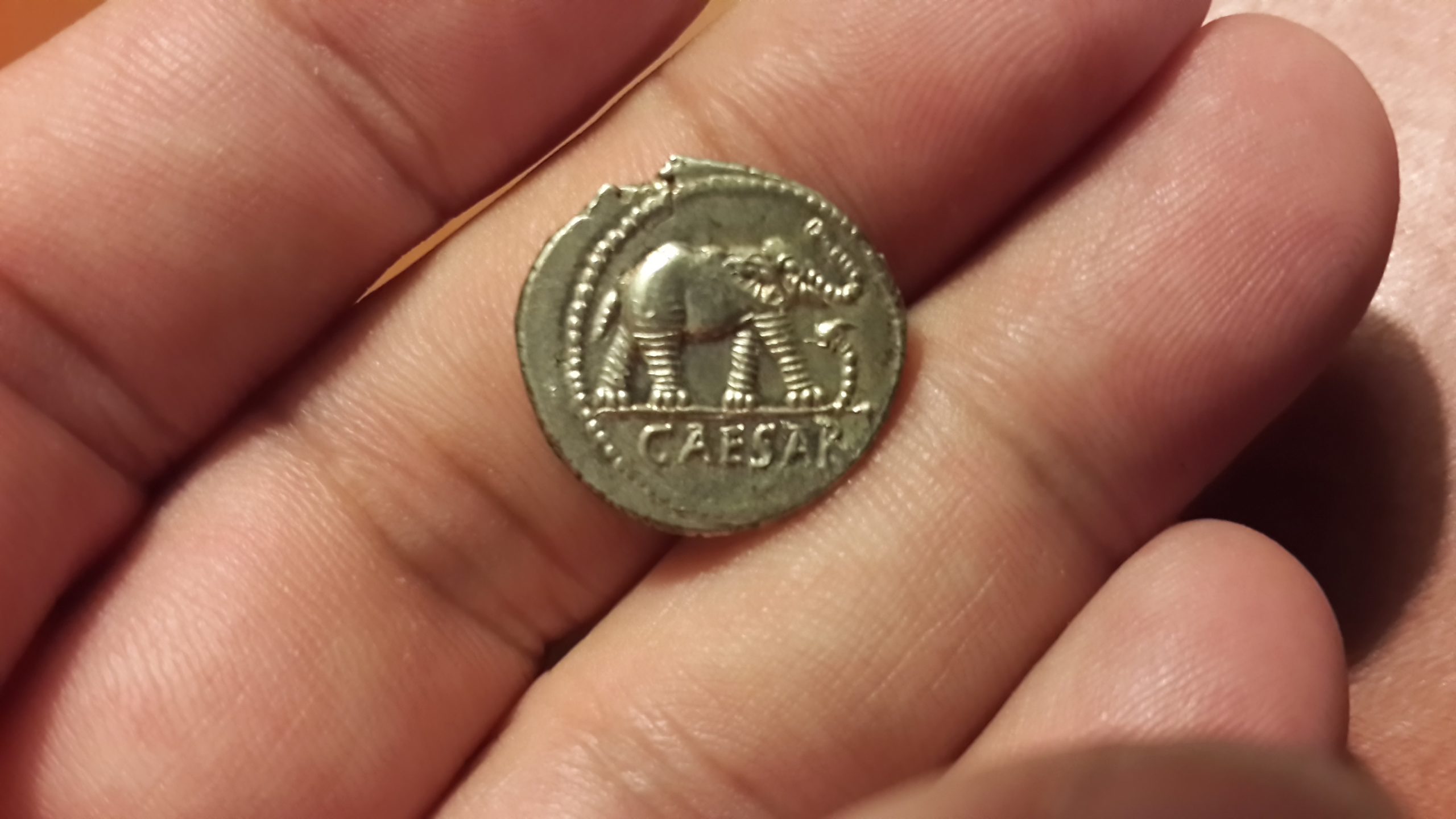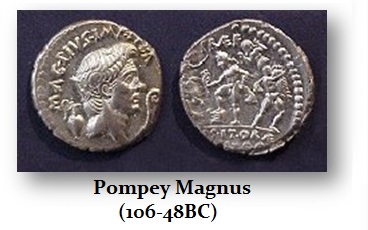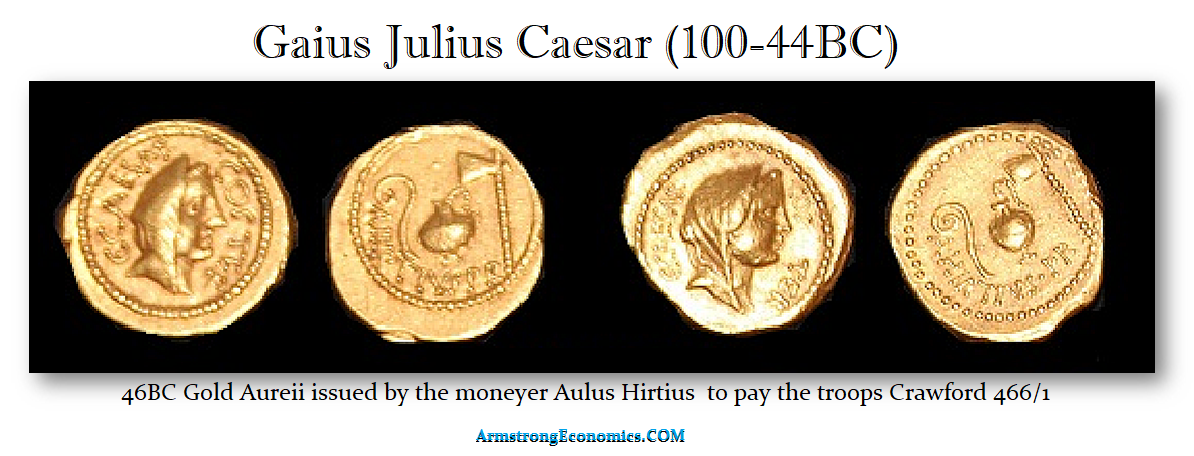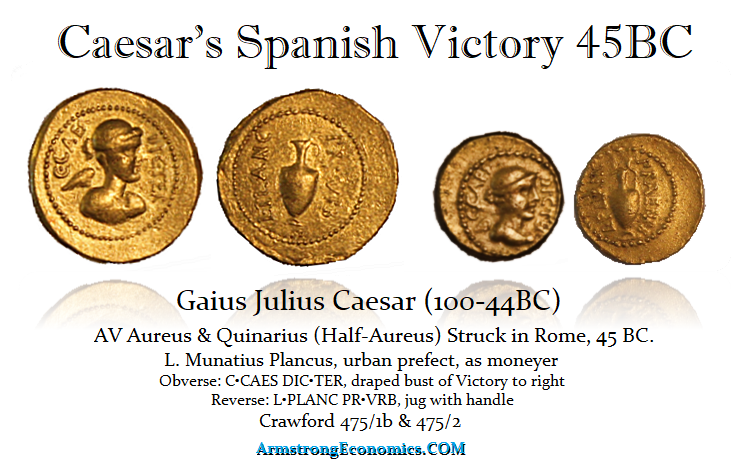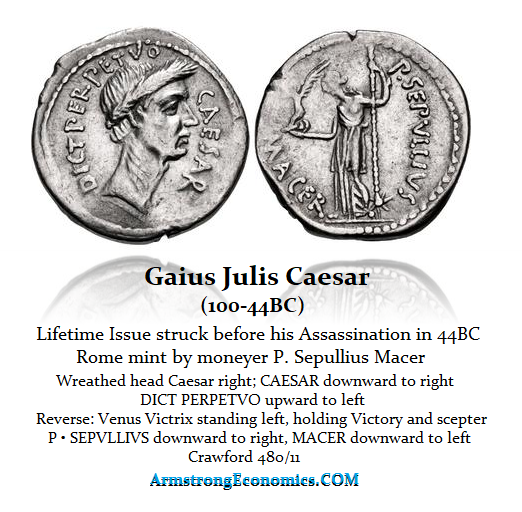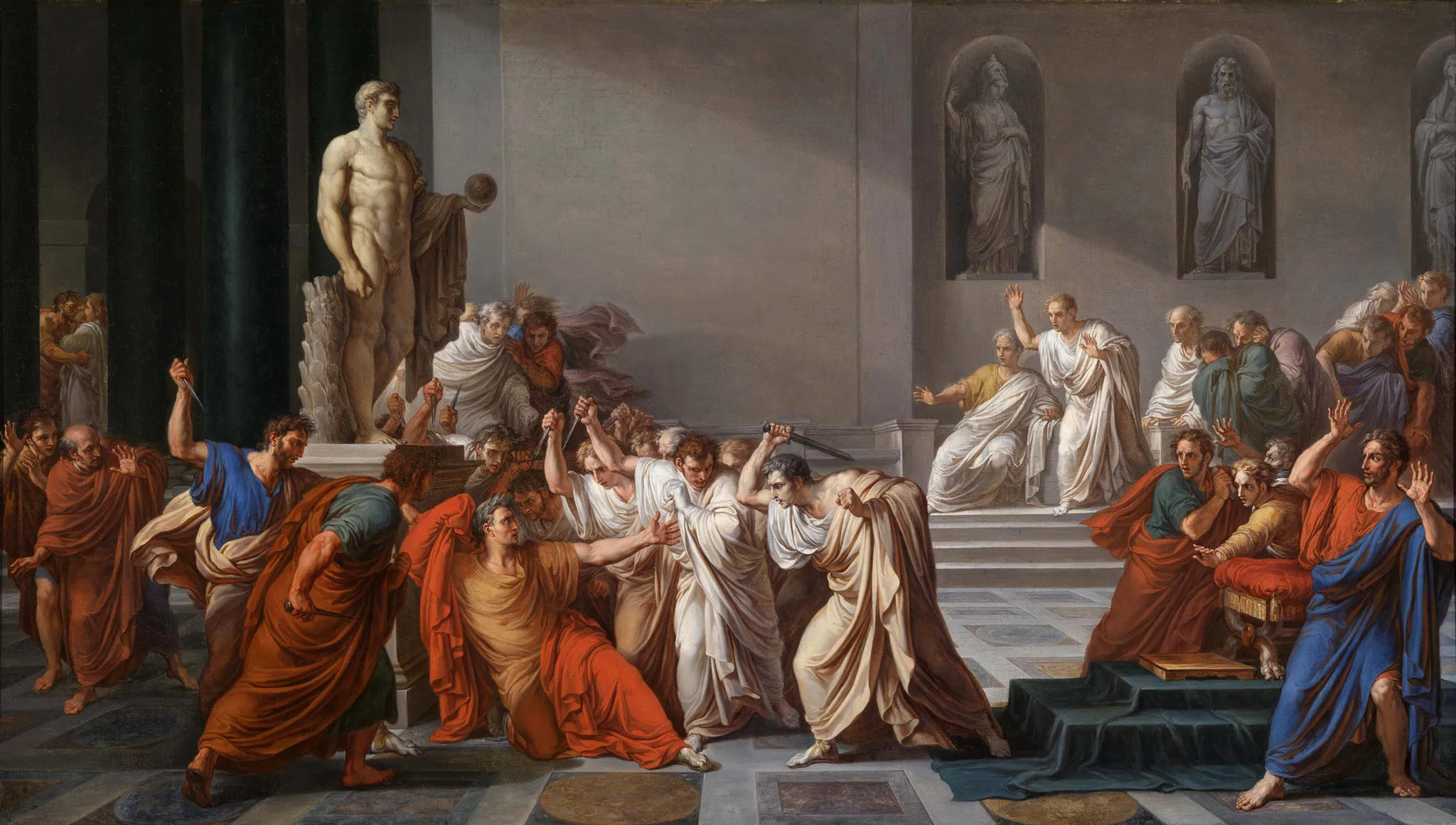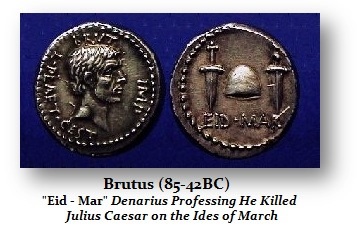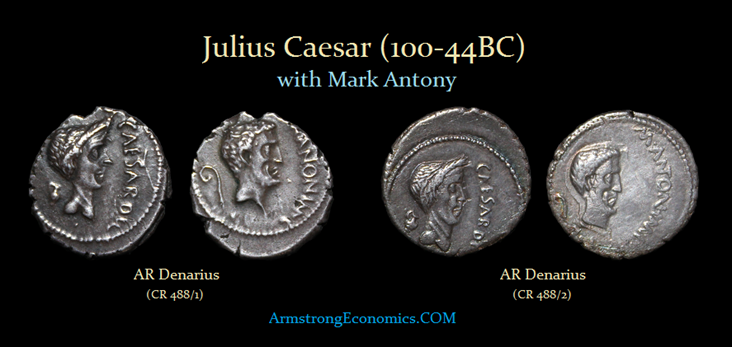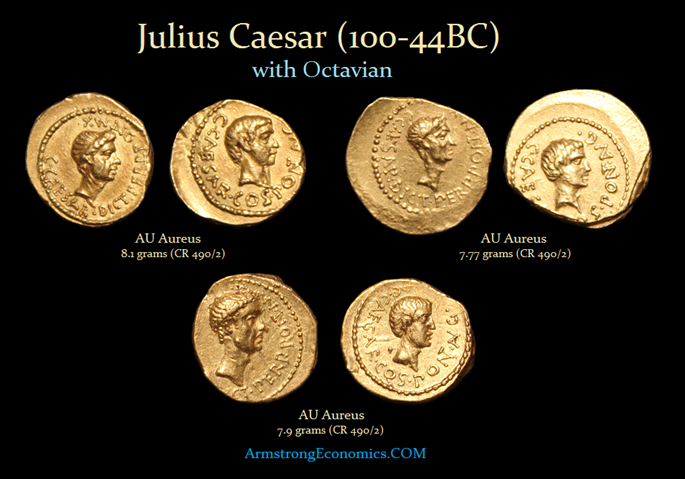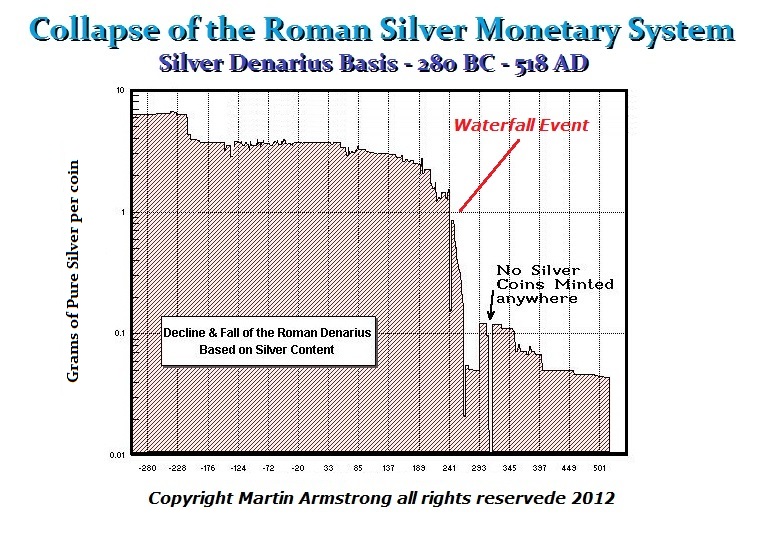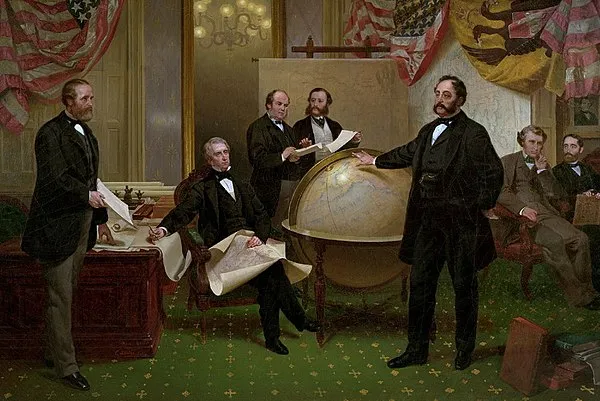QUESTION: I found it fascinating that you were able to calculate the funding of the war that Cleopatra provided Mark Antony. Have you done similar work to look at the funding of Julius Caesar to cross the Rubicon?
WT
ANSWER: Yes. The Battle of Actium was a proxy war instigated by Cleopatra to try to seize control of Rome following the assassination of Julius Caesar. The best estimate I could make was that Mark Antony struck at least 25 million legionary denarii up to 35 million. Likewise, the coinage of Julius Caesar provides us with evidence of the cost of revolution as well, which is not recorded among contemporary historians. They were more interested in the reasons and biases of the time, not in the economics of the events.
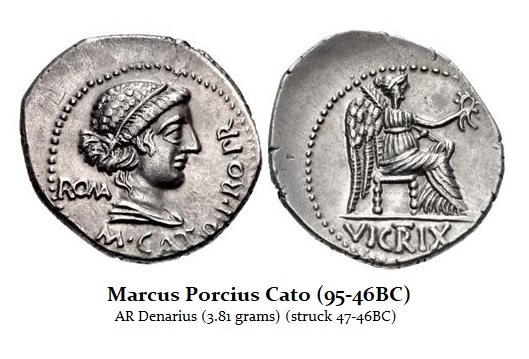 Julius Caesar struck his Rubicon Coinage with the image of an elephant crushing a dragon-snake which represented the corrupt Senate. Some tried to claim that the snake represented Pompey the Great. Caesar had married Pompey to his daughter. He was greatly upset when the Egyptians beheaded Pompey and gave him his head as a gift. It is unlikely that the snake was ever a personal representation of Pompey. It was, in my mind, the Senate where the instigator of the civil war was none other than the vile and corrupt Cato. It was Cato who was the leader of the Opimates who controlled the Senate and tried to strip Caesar of all power which effectively forced him to cross the Rubicon.
Julius Caesar struck his Rubicon Coinage with the image of an elephant crushing a dragon-snake which represented the corrupt Senate. Some tried to claim that the snake represented Pompey the Great. Caesar had married Pompey to his daughter. He was greatly upset when the Egyptians beheaded Pompey and gave him his head as a gift. It is unlikely that the snake was ever a personal representation of Pompey. It was, in my mind, the Senate where the instigator of the civil war was none other than the vile and corrupt Cato. It was Cato who was the leader of the Opimates who controlled the Senate and tried to strip Caesar of all power which effectively forced him to cross the Rubicon.
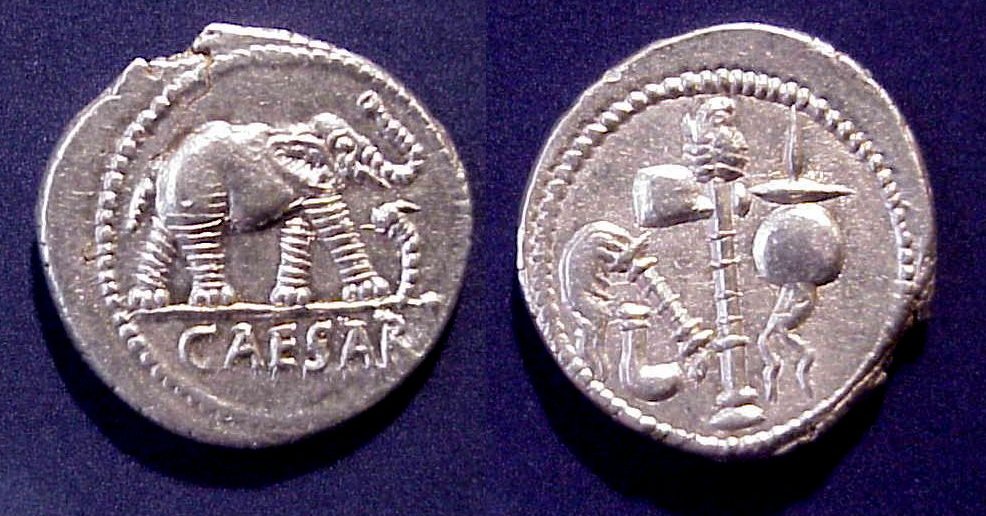 It is most likely that this coinage commenced in Gaul, as part of Caesar’s preparations for invasion, in order to pay his troops. The number of dies suggests that this issue was also huge exceeding 25 million denarii. It most certainly was expanded when he acquired the reserves of the Roman Treasury that were left behind by the panic-stricken Senators, Optimates, when they fled Rome because the people never supported the likes of Cato or Cicero for that matter.
It is most likely that this coinage commenced in Gaul, as part of Caesar’s preparations for invasion, in order to pay his troops. The number of dies suggests that this issue was also huge exceeding 25 million denarii. It most certainly was expanded when he acquired the reserves of the Roman Treasury that were left behind by the panic-stricken Senators, Optimates, when they fled Rome because the people never supported the likes of Cato or Cicero for that matter.
Elephant walking right, trampling on dragon-snake the head of which rears up before him, CAESAR in exergue. On the reverse, we see the emblems of the pontificate — simpulum, aspergillum, axe, and apex.
The coinage opens an economic window that allows us to understand the real motives and costs behind the events in history. This Rubicon Coinage reveals something far more politically significant than what the contemporary writers revealed. Caesar actually took personal responsibility for the production of this coinage which was obviously unconstitutional at the time. Typically, there was a treasurer also known as a moneyer who issued the coins. There is no moneyer on this coinage so Caesar is taking PERSONAL responsibility absent the possession of a qualifying magistracy appointed by the Senate.
This is why I call this the Rubicon Coinage for Caesar was declaring war on the Senate of Rome in this time of national crisis. The very creation of this coinage without a moneyer sanction by the Senate was a declaration of civil war. The symbolism of the obverse can hardly be anything other than the triumph of good over evil, while the reverse suggests Caesar’s possession of the office of Pontifex Maximus (high priest) also ending the corruption of bribing the high priests to extend the calendar to avoid elections. Hence, today we have the Julian calendar.
This issue of the Rubicon Coinage clearly funded the crossing of the Rubicon, which is why I call it that. How long this important type remained in issue after Cato and his corrupt Senators fled and the war with Pompey began is hard to say. It was most likely struck right up to the time of the final campaign leading to the Battle of Pharsalus, which took place August 9th, 48 BC, with the defeat of Pompey. It was on January 10th, 49 BC when Julius Caesar crossed the Rubicon.
It took just 19 months to bring down the Republic or 82.3 weeks from Caesar crossing the Rubicon to the defeat of Pompey at the Battle of Pharsalus in the Greek region of Thessaly. Thereafter, Caesar then consolidated his power. He was elected as consul (normally a one-year term) in 48, 46, 45, and 44 BC. Because of the political crisis and the corruption of the Senate, which did not want to yield any power to the people, the new Senate thus waived the traditional requirement that a consul had to wait 10 years between terms.
Caesar was also granted the title and office of Dictator which was a political position in times of crisis during the years 49, 48-47, and 46-44 BC. Traditionally, the office of the Dictator was confined to just six months and he would be granted special powers to one man for a limited period to escape the bureaucracy to get things done. This was the means to deal with an emergency that threatened the state.
To meet the Republic’s urgent need for cash, Caesar resumed coinage of gold, which had not been struck by Rome since the dictatorship of Sulla (82-81 BCE) – a period of 34 year+. Most of Caesar’s aurei (about eight grams) are crude in design and workmanship being struck about 46 BC. The moneyer was Aulus Hirtius was a key supporter of Caesar. He served as one of Caesar’s legates in Gaul from about 54 BC and was an envoy to Pompey in 50 BC. Hirtius served Caesar loyally during the Civil War against Pompey and his successors in 48-45 BC.
Hirtius was appointed as Caesar’s mintmaster in Rome in 46 BC, and it was at this time as a moneyer when he struck the first truly large issue of gold aurei from the spoils of Caesar’s campaigns. These aurei, as mentioned, were poorly designed and executed with a veiled female head on the obverse, often appearing as a male, with priestly implements on the reverse symbolizing Pontifex Maximus position of Caesar. They were used to pay Caesar’s soldiers after the great triumphal parade.
Following Caesar’s assassination, Hirtius initially supported Marc Antony, but, after taking over as Consul in 43 BC, he raised an army against Antony at the instigation of Cicero and Octavian. His army defeated Antony at the Battle of Mutina in April of 43 BC, but Hirtius was killed in the fighting. He, therefore, vacated that political stage leaving Octavian and Antony masters of Rome. Hirtius was a loyal supporter of Caesar for he preserved and edited Caesar’s Commentaries on the Gallic and Civil Wars.
It was during the latter part of 45BC when a different series of Aureii was produced for Caesar’s Spanish triumph in October of that year. Indeed, the obverse type of the winged goddess Victory clearly refers to Caesar’s victory at Munda against Roman adversaries. Caesar was a Populares, a man of the people, who was not shy to express his increasing disdain for the factions of the aristocracy – the Optimates led by Cato.
Caesar even celebrated a triumph in the capital, an unprecedented commemoration of victory over other Romans illustrating he regarded the Optimates as the enemy of the people. The presence within the issue of a gold half-aureus, or quinarius, makes it almost certain that this type was minted specially for the Spanish triumph since the denomination was typically associated with the distribution of largess at public celebrations.
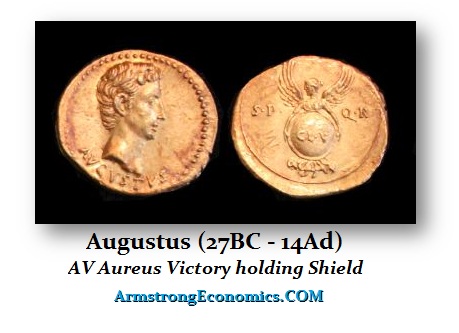 Lucius Munatius Plancus, whose name appears on the reverse of this coin, was one of the Urban Prefects appointed by Caesar in 46 BC to administer the capital while he was on campaign. After this prominent issue of aurei was minted under his name, he rose to the position of governor of Transalpine Gaul in 44 BC where he founded the colony of Lugdunum, and later was appointed consul in 42 BC.
Lucius Munatius Plancus, whose name appears on the reverse of this coin, was one of the Urban Prefects appointed by Caesar in 46 BC to administer the capital while he was on campaign. After this prominent issue of aurei was minted under his name, he rose to the position of governor of Transalpine Gaul in 44 BC where he founded the colony of Lugdunum, and later was appointed consul in 42 BC.
Although he supported Marc Antony in the tumult which followed Caesar’s assassination, he eventually became an adviser to Octavian and according to Suetonius he dissuaded the Octavian from assuming the name of Romulus as a ‘second founder of Rome’ (Suet. Aug. 7) and instead on January 16th, 27 BC, it was Plancus who formally proposed that the title ‘Augustus‘, meaning ‘”majestic”, “great”, “venerable”‘, first among men, be granted to Octavian.
It was not until Caesar received the unprecedented title of “Dictator in Perpetuity” (DICT PERPETUO on the coinage) early in 44 BC, conservative Romans were horrified. To them, this was akin to a monarchy. Here is a coin struck before his assassination with the title DICT PERPETUO issued by the moneyer Macer.
They assassinated Caesar on the Ides of March – the 15th. Therefore, coins with the portrait of Caesar with the legend “DICT PERPETUO” had to have been struck for only a few weeks. He was granted that title between January 26th, 44 BC, and February 15th, 44 BC. It was on February 15th when Rome celebrated the festival of the Lupercal, which we call today Valentines’s Day. That was when Mark Antony twice presents Caesar with a royal diadem, urging him to take it and declare himself king. He refuses this offer and orders the crown to be placed in the Temple of Jupiter. It was most likely at this time when Caesar took the title “DICT PERPETUO” as the alternative. Curiously, it was 30/31 days later when he was assassinated – Pi?
The conspirators who again fled Rome also began to issue coins pretending they are defending the Republic, championed by the fake news of Cicero,. This is even when Brutus issues silver and gold coinage bragging that he killed Caesar on the EID MAR – 15th of March.
When Caesar was assassinated, that is when we see the coinage change. Mark Antony starts to issue denarii with his picture on one side and Caesar’s on the other.
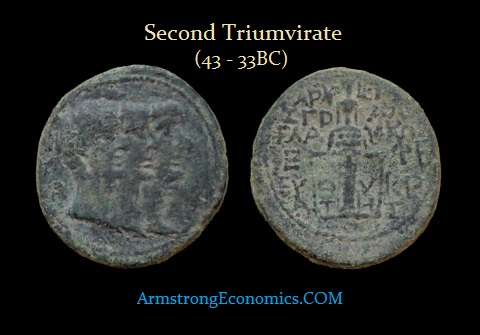
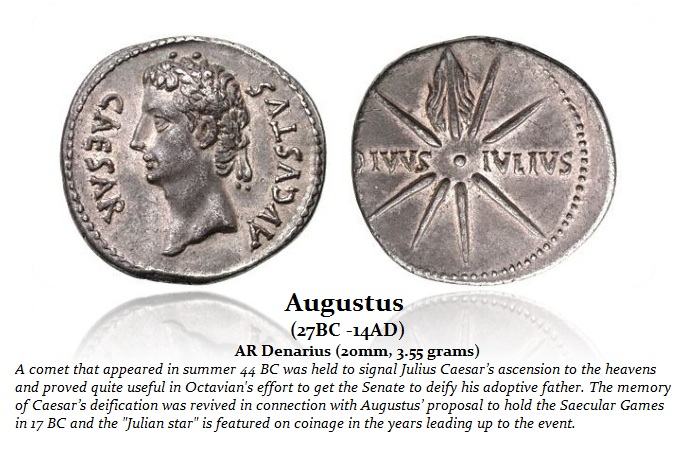 We also see Octavian issuing even gold aurei with his image on one side and Caesar on the other. They even issued coins announcing their Triumvirate against the corrupt Polulares. We even see Augustus, after he defeats Cleopatra and Mark Antony, issuing coinage showing the comet in the sky that people took as the omen that Caesar was now a god.
We also see Octavian issuing even gold aurei with his image on one side and Caesar on the other. They even issued coins announcing their Triumvirate against the corrupt Polulares. We even see Augustus, after he defeats Cleopatra and Mark Antony, issuing coinage showing the comet in the sky that people took as the omen that Caesar was now a god.
The coinage documents events written by contemporary writers at the time. This was the basis of Shakespeare’s play – Julius Caesar. The coinage has both confirmed history but also opened the door to establish answers to important economic trends.
Only with the coinage was it possible to answer the question of how fast did Rome really fall. By imputing this data, it became possible for the computer to even correctly forecast the fall of communism and the Berlin Wall in 1989. It is fascinating how it takes a finite amount of time to bring down a nation-state. When it starts to fall, it does so in a Waterfall type event. Rome fell in just 8.6 years.

